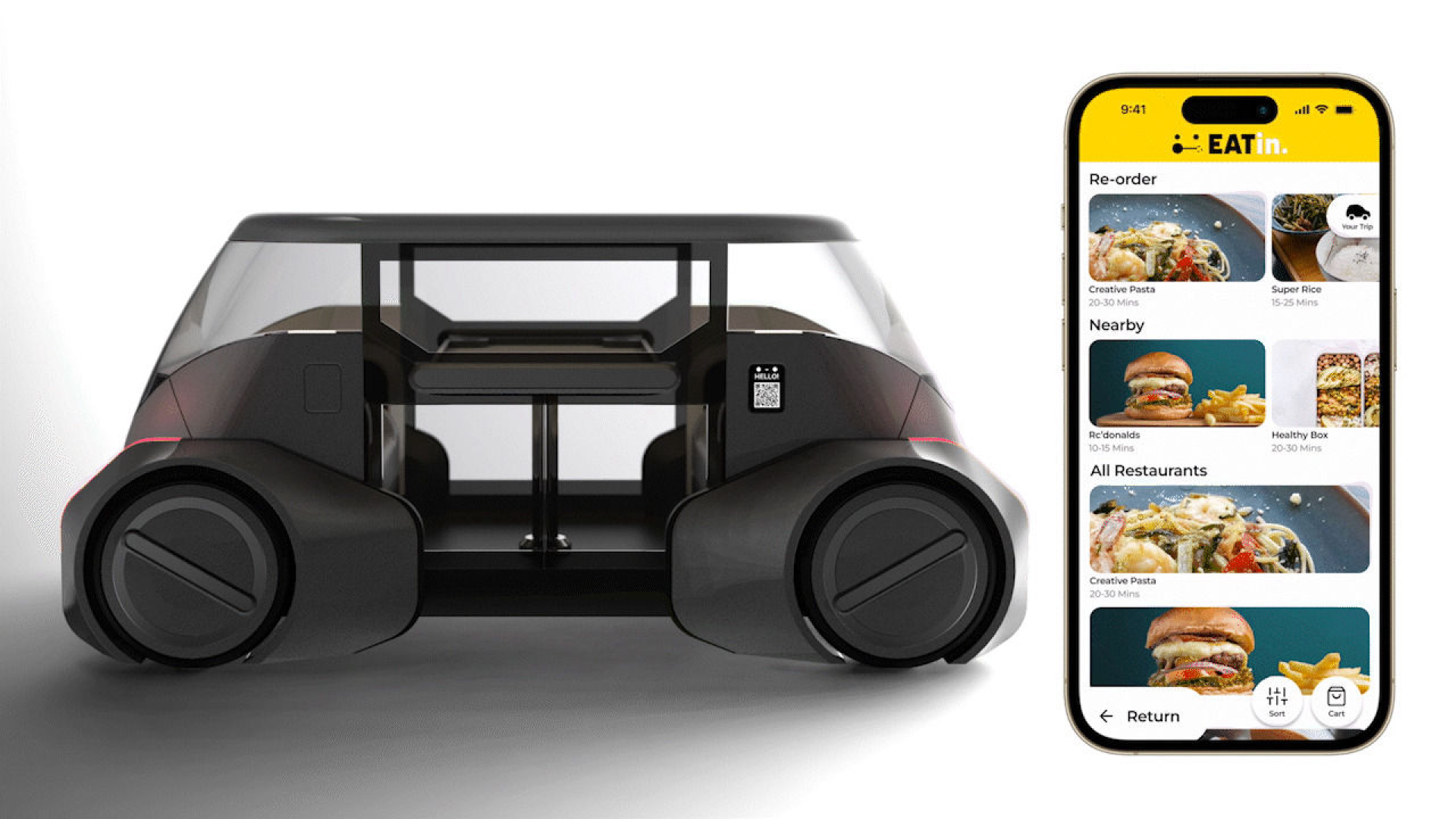
Eatin.
Autonomous taxi and food delivery
EATin is a unique service that combines the convenience of food delivery with the comfort of a taxi ride. The goal is to provide a sense of coziness and warmth to those who are feeling tired and hungry after a long day of work.
In today's fast-paced Asian culture, many people are overworked and in need of a quick and easy way to get a delicious meal. That's where EATin comes in - we bring the food directly to you, so you can relax and enjoy a comfortable ride while you eat. Whether you're looking to satisfy your cravings or simply want to take a break from your busy schedule, EATin is the perfect choice.
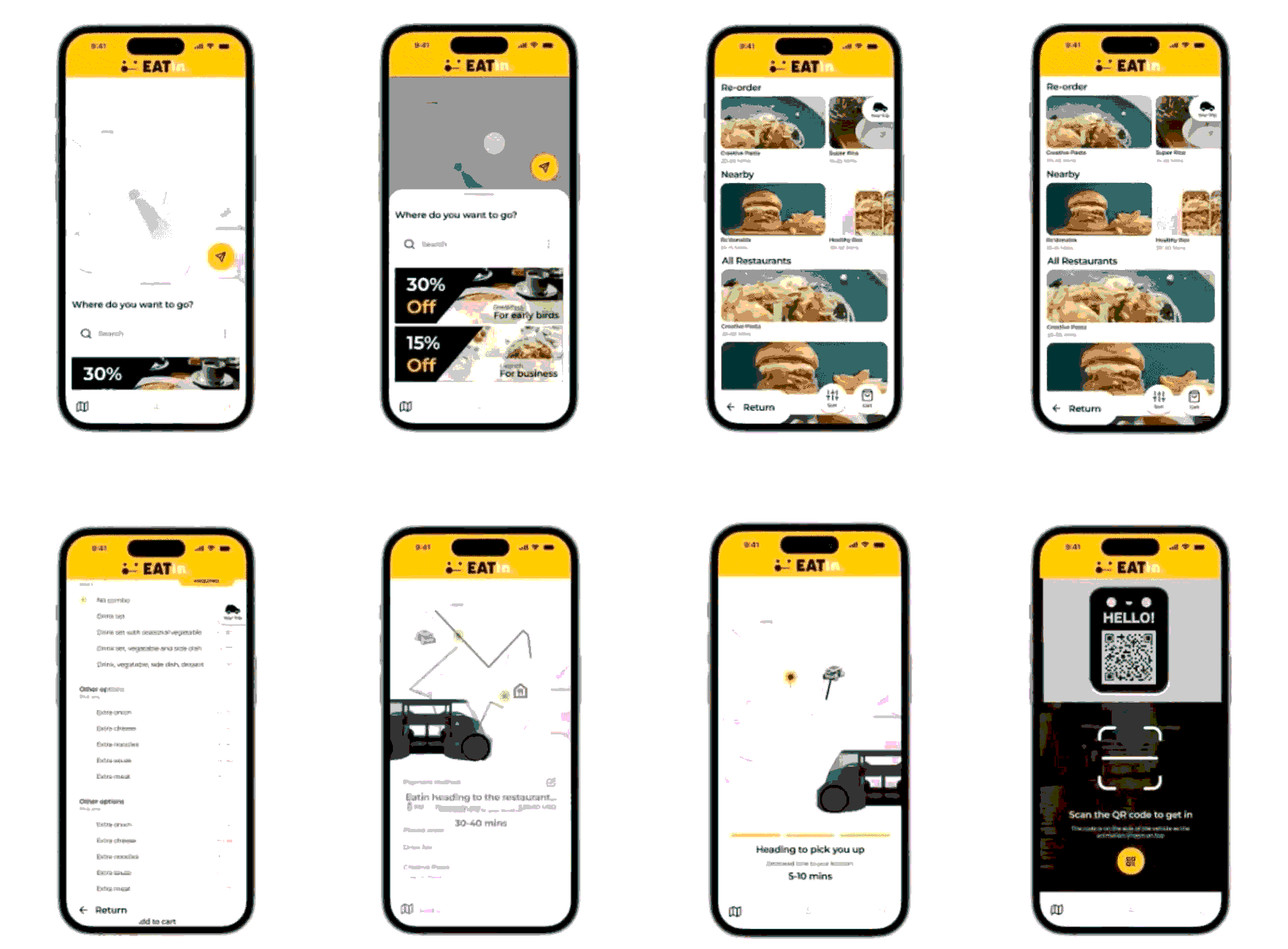
About this project
My role : Individual
User research, User experience, User Interface,
Industrial design, Car design
Main tools involved
Alias, Fusion360, Keyshot, Figma, Procreate, Clay, Hand
Project duration
Car
design: 2 months, UIUX: 2 weeks
The problem
From an experience of being outside hungry and late
I once found myself out exceptionally late, feeling cold and hungry. My only option seemed to be calling a taxi to get home, but even if I made it back, my choices for food were limited to microwave meals or cup noodles since all the restaurants were closed.
Many Chinese internet workers face limited food options after their late-night shifts, as most restaurants are closed by the time they leave the office. As a result, they may skip meals or resort to unhealthy options like cup noodles or microwavable foods, which can lead to health issues.
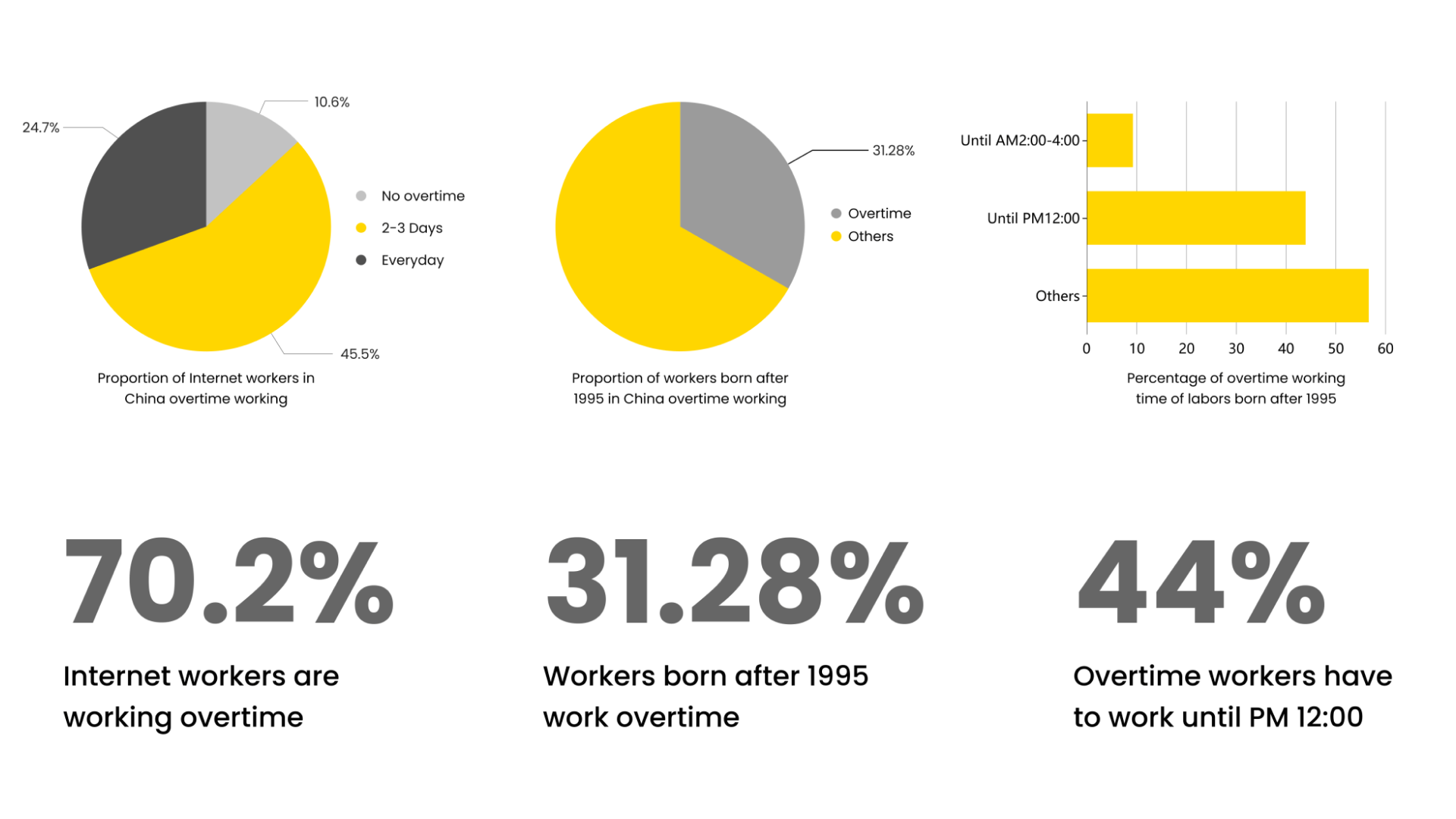
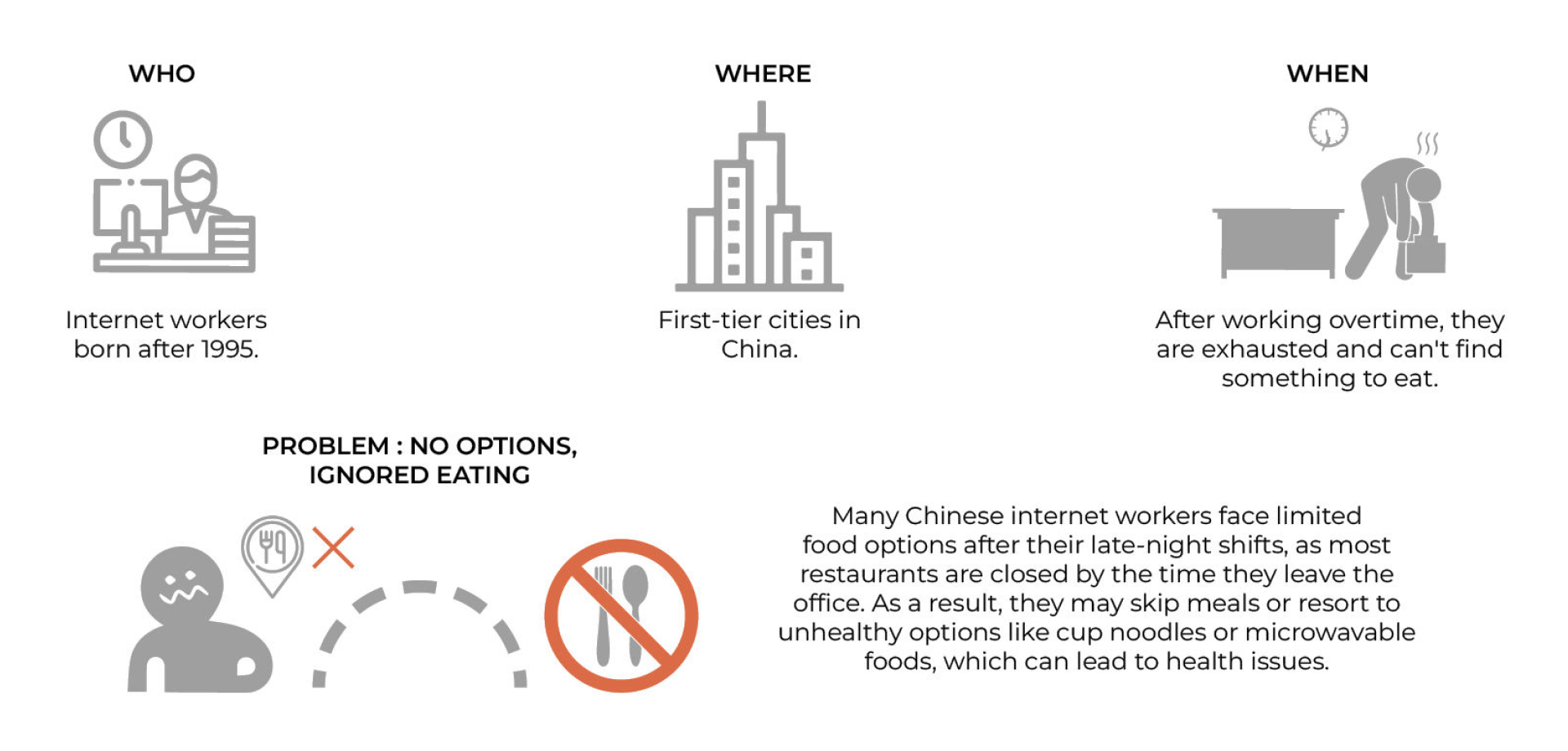
The idea
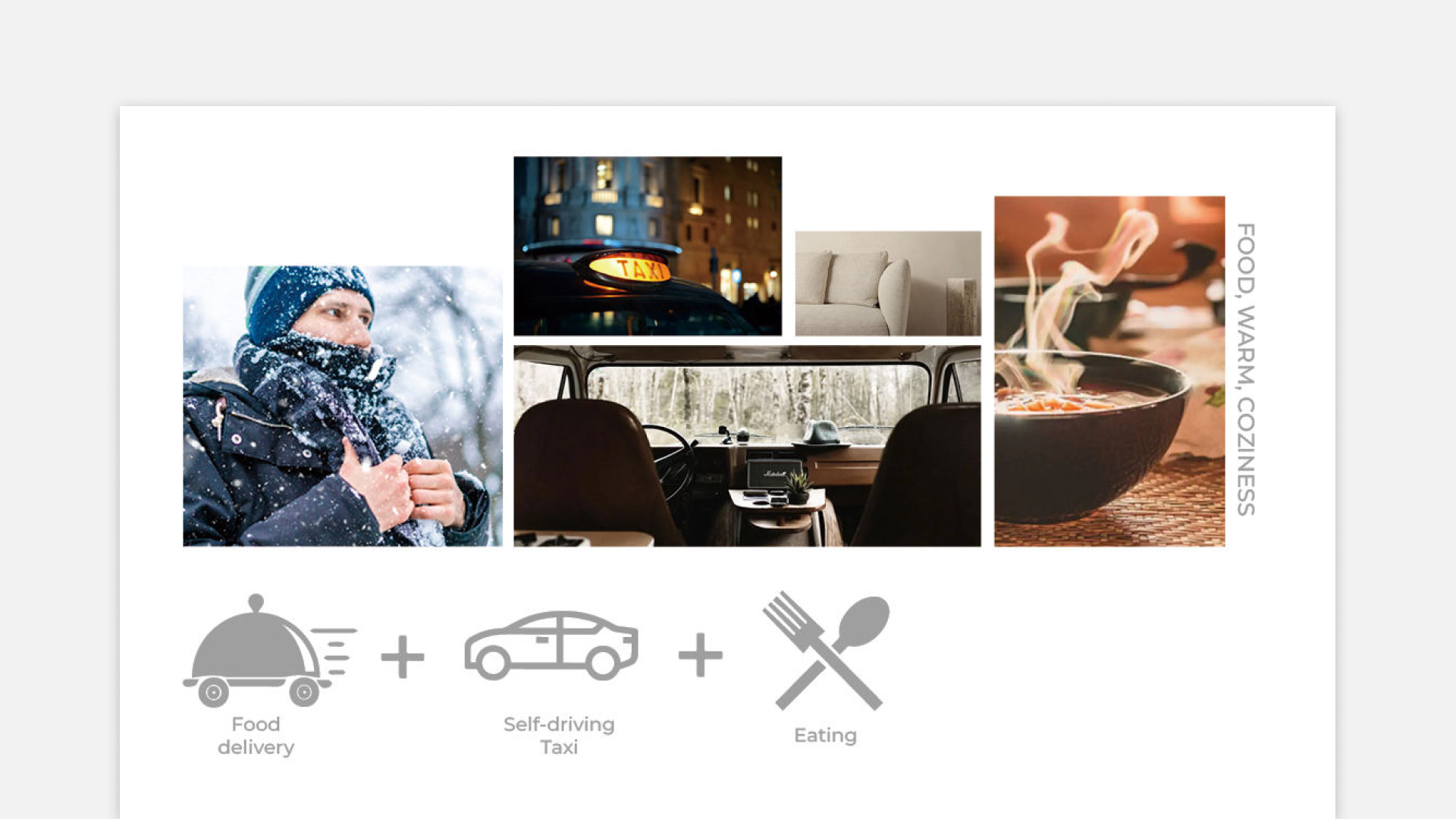
What if... There is a taxi that brings food to you?
Imagine a small taxi that brings you a warm meal while taking you where you need to go. This innovative service would provide tired and hungry individuals with the chance to enjoy a cozy, relaxing ride while satisfying their cravings. Internet workers often don't have time to find a restaurant to eat at, and their only option is to rush home. To address this problem, EATin combines food delivery with transportation, allowing workers to eat on the go and save time and maintain their health.
Persona

I created a persona to better understand the needs and challenges of internet workers like Leo. By delving into their experiences, preferences, and frustrations, we can design solutions that cater to their specific requirements. The personas help me empathize with the users and ensure that our product meets their expectations.
Empathy map
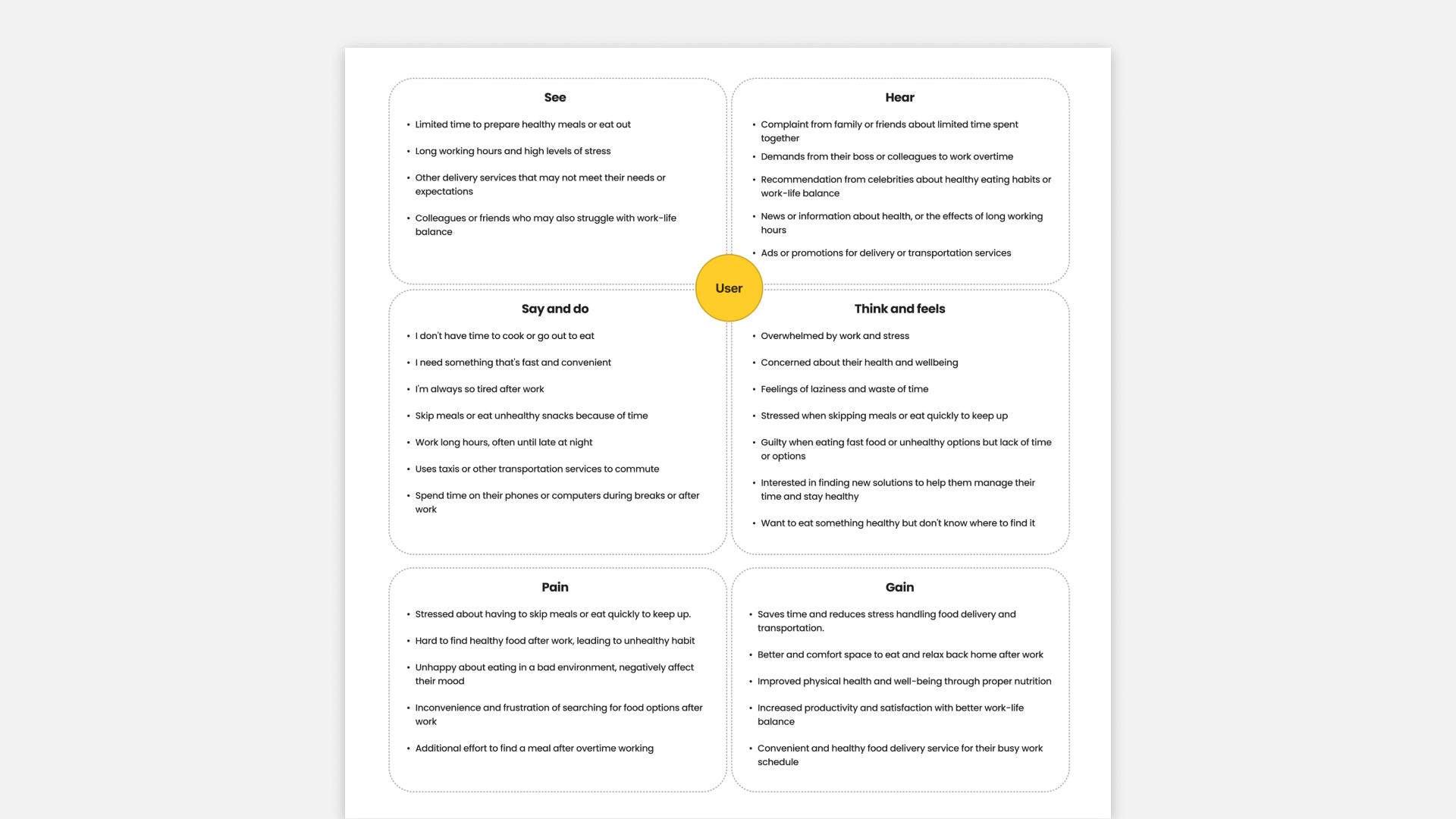
The empathy map offers valuable insights into the thoughts, feelings, needs, and experiences of internet workers like. By understanding their perspectives and motivations, I can design a product that effectively addresses their pain points and provides a solution tailored to their needs.
Potential stakeholders
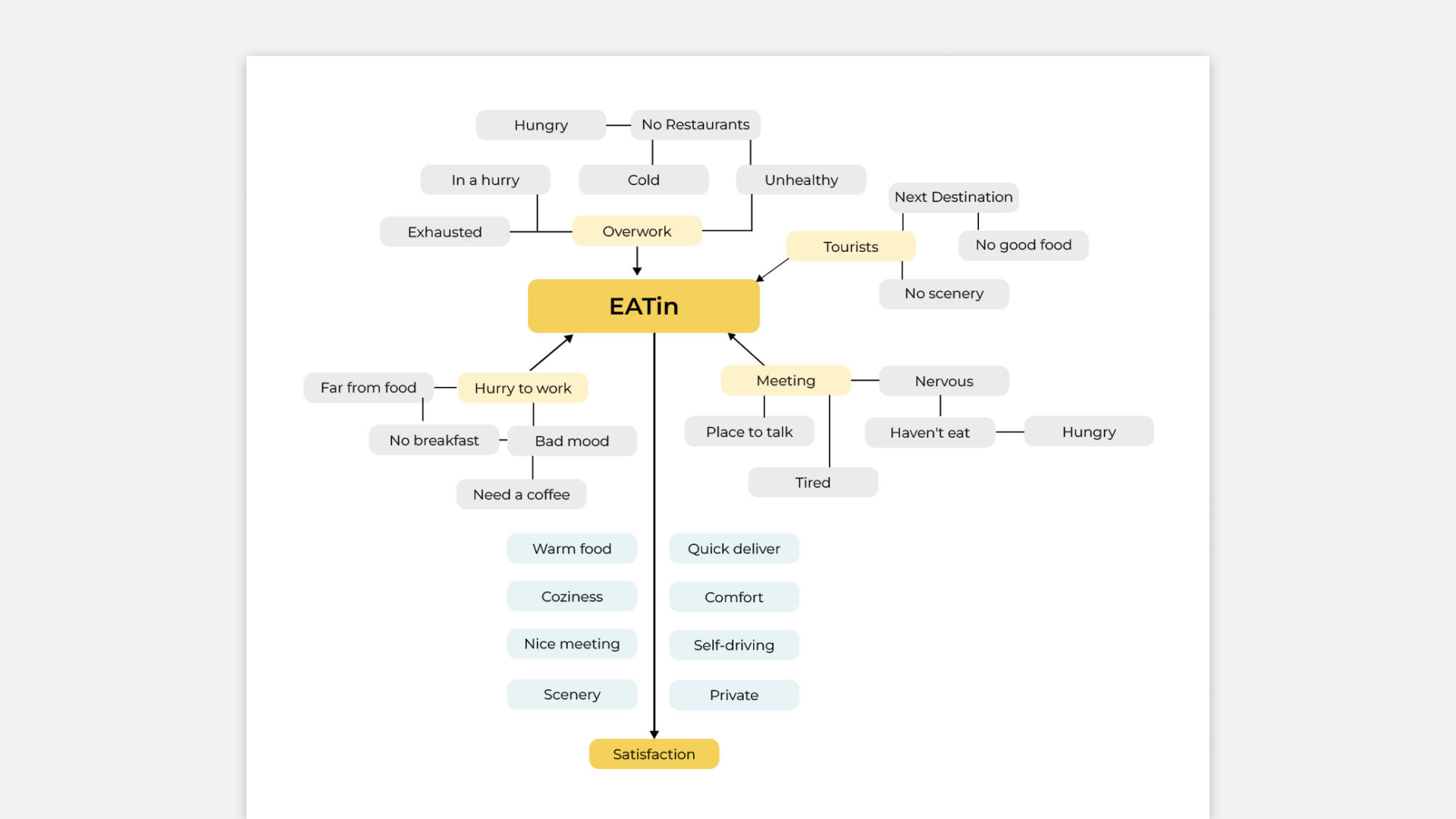
The stakeholders for a taxi-food delivery hybrid service can be diverse and include people with various needs and challenges. As illustrated in the chart, each case may have different problems, but some may also have shared demands that the hybrid service can meet.
Autonomous service flow
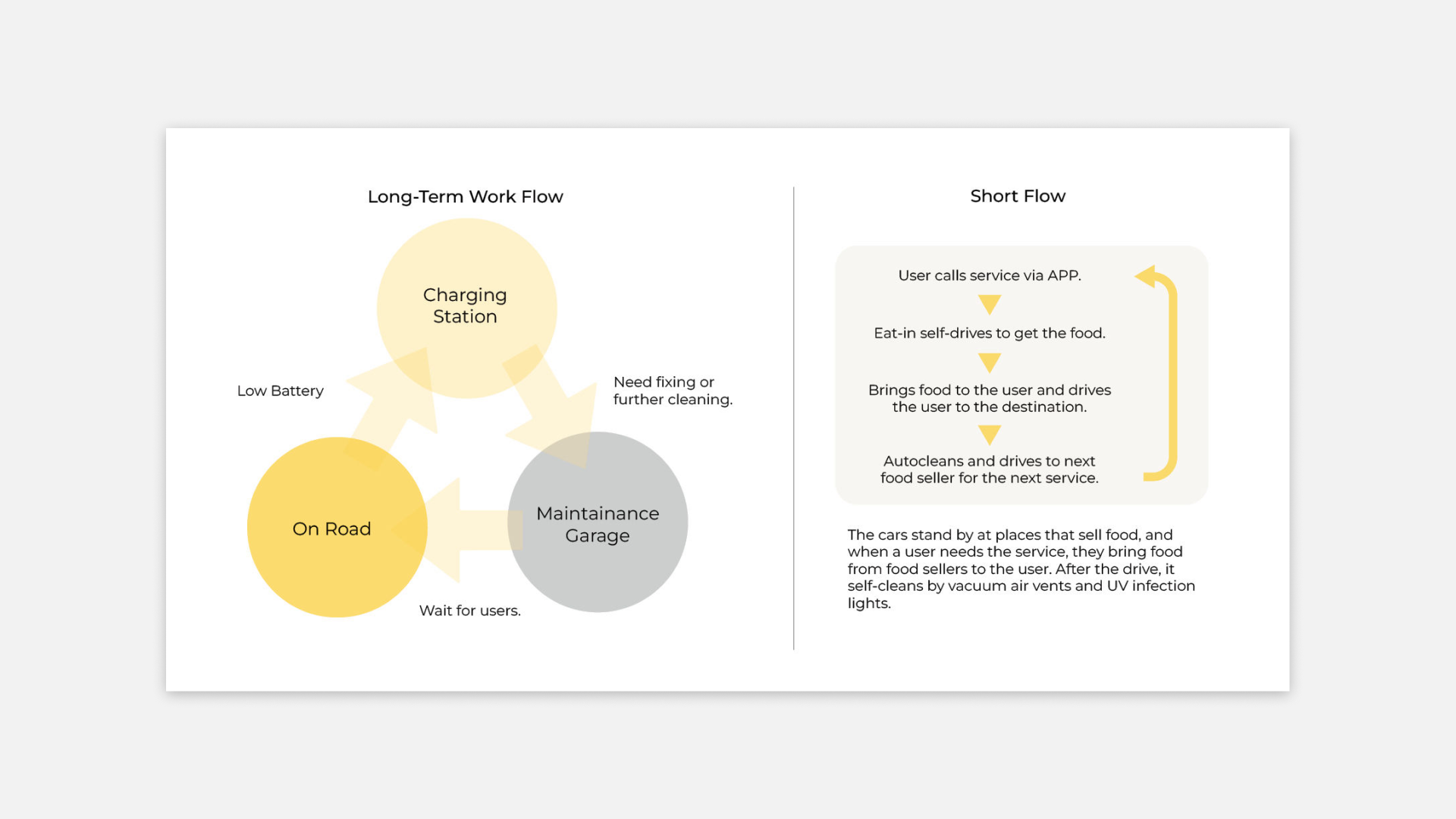
Since the service operates autonomously, it requires organized methods and locations for maintenance. The vehicle's maintenance involves various elements such as battery care, gear upkeep, interior cleaning, and more, which will require a designated garage or space to address all these concerns.
User flow and wireframe
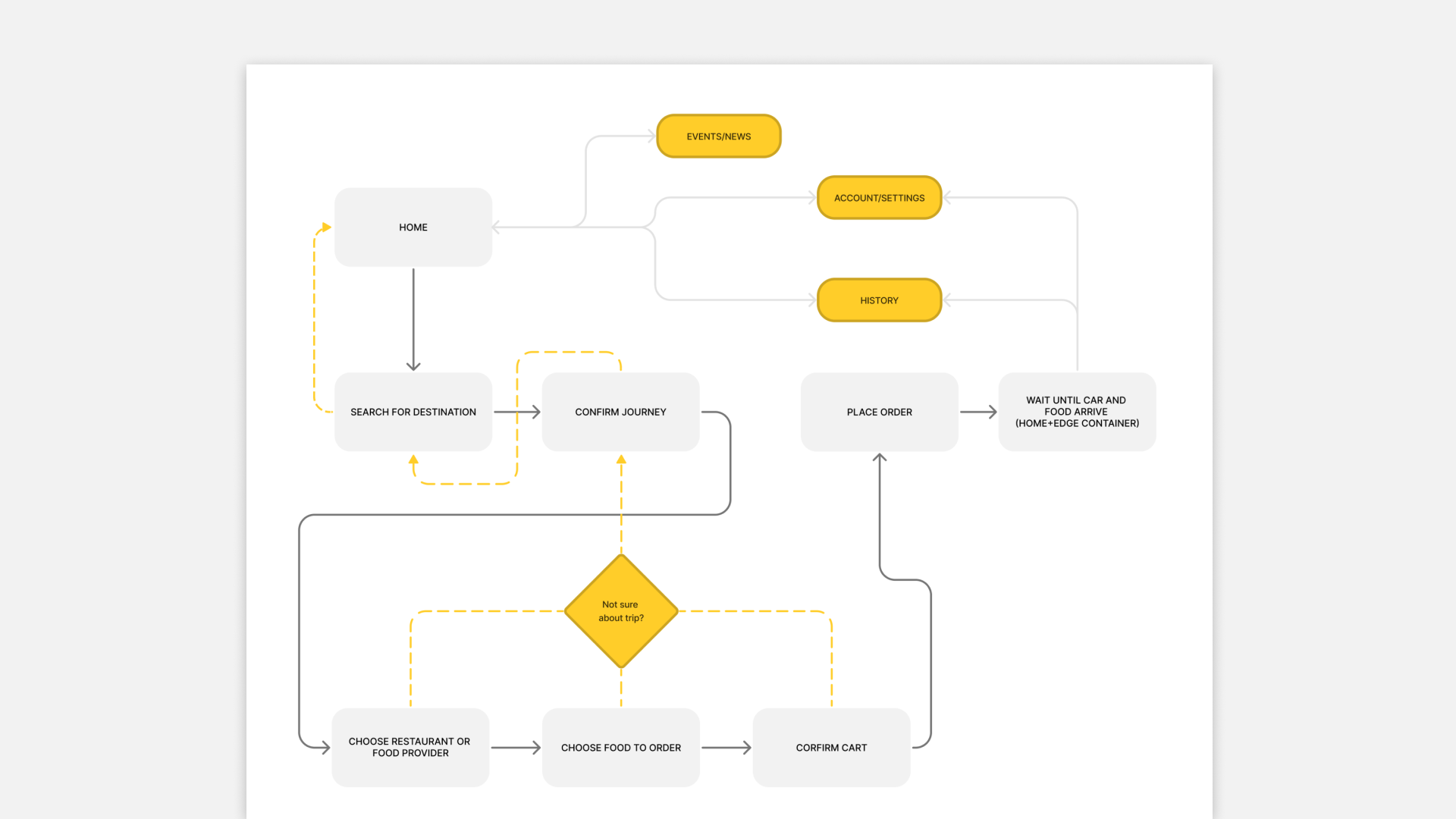

The user flow and wireframe I created provide a user-centered design experience for internet workers. The user flow illustrates how users experience the product, allowing them to navigate smoothly back and forth to check their journey within the food order process.
Prototype
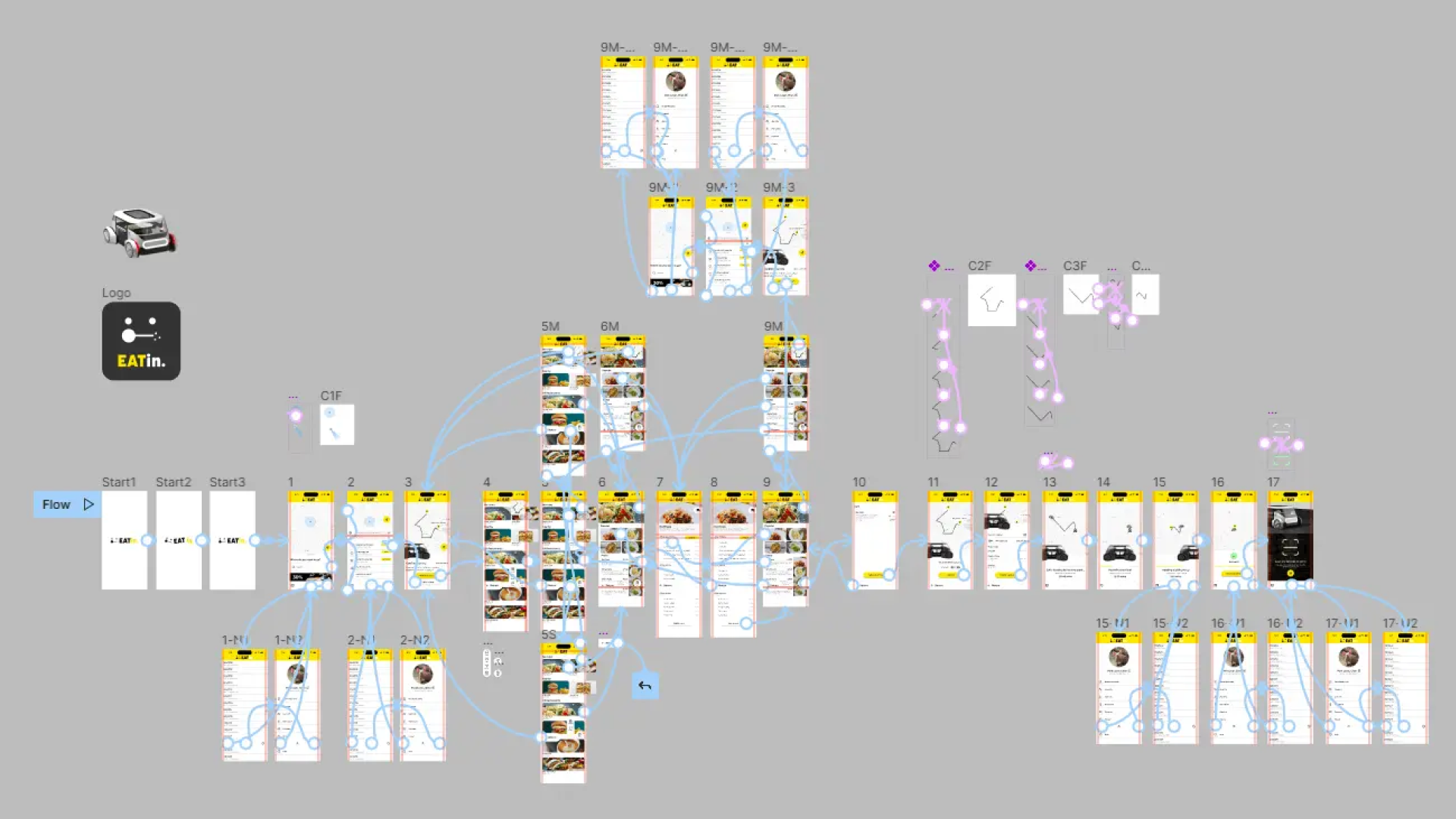
The prototype I created combines different features based on the user's need. It aims to provide an intuitive user experience convenient but without feeling overwhelmed. By carefully designing the interface and navigation, the prototype ensures that users can effortlessly interact with all the features, minimizing any confusion.
The Autonomous Design
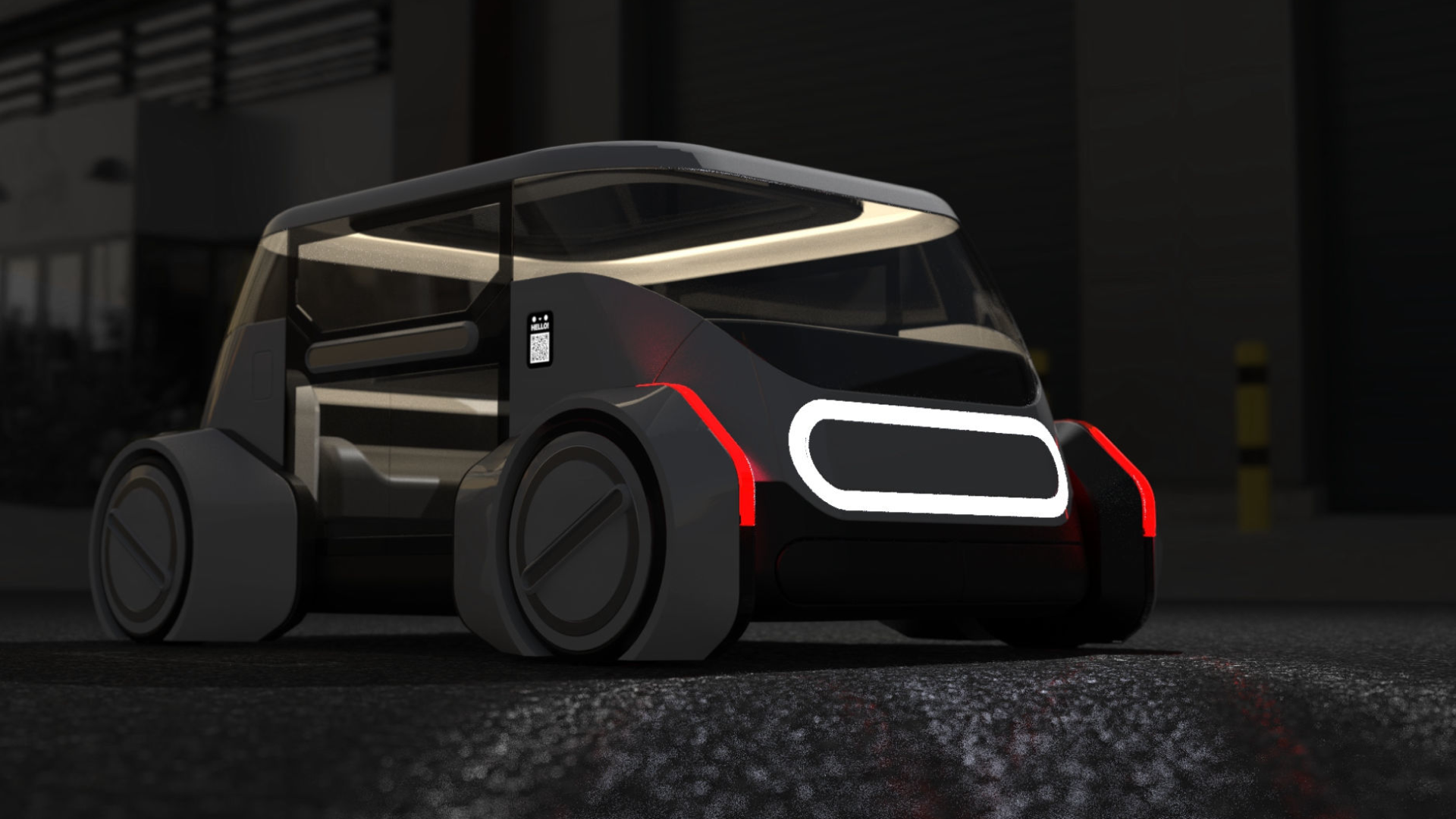
This part of the design process focuses on the industrial design or car design aspect of the vehicle. This includes various stages such as packaging, ideation, 3D modeling, clay modeling, and more. These steps involve the creative exploration and refinement of the physical design of the project.
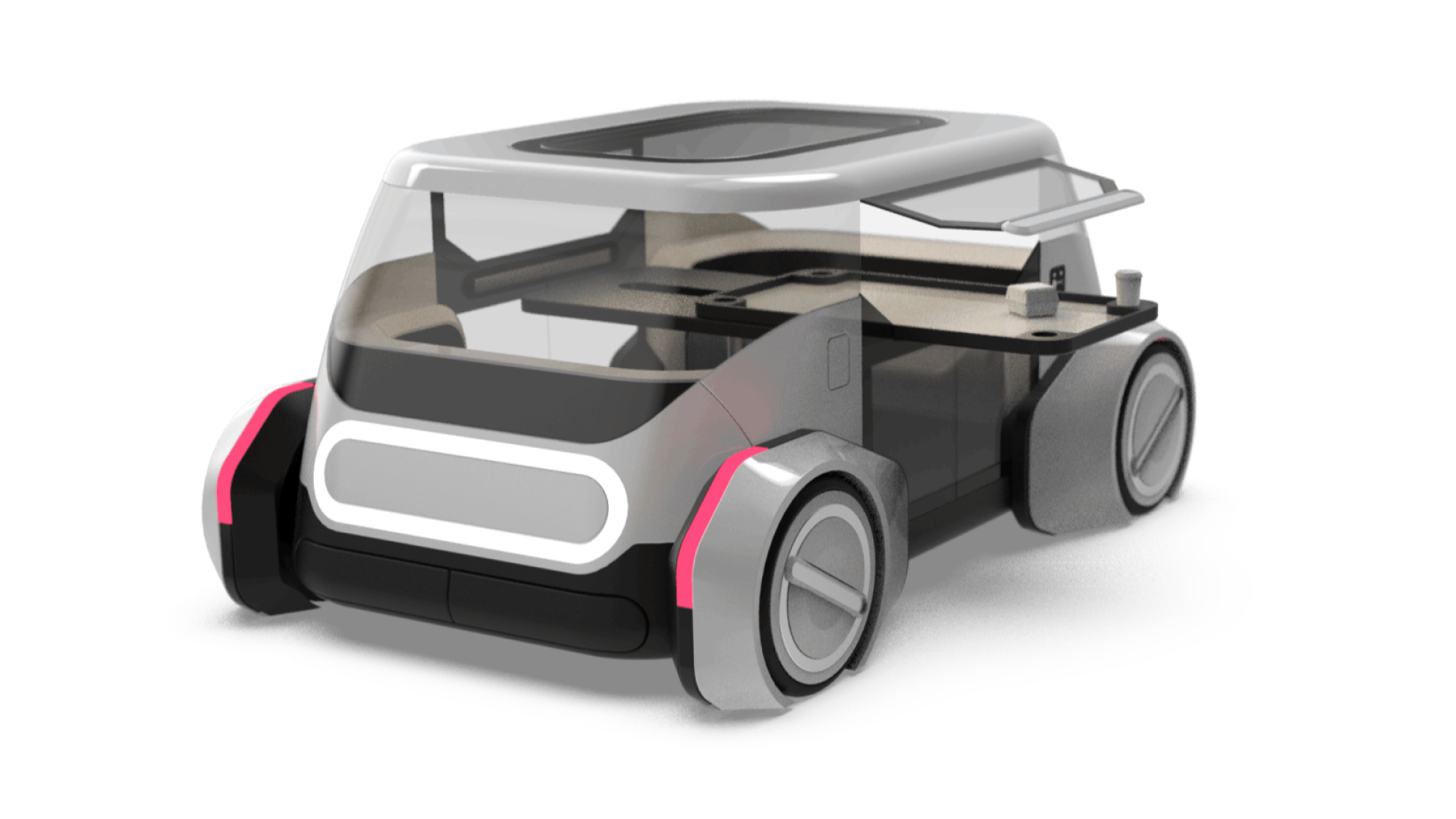
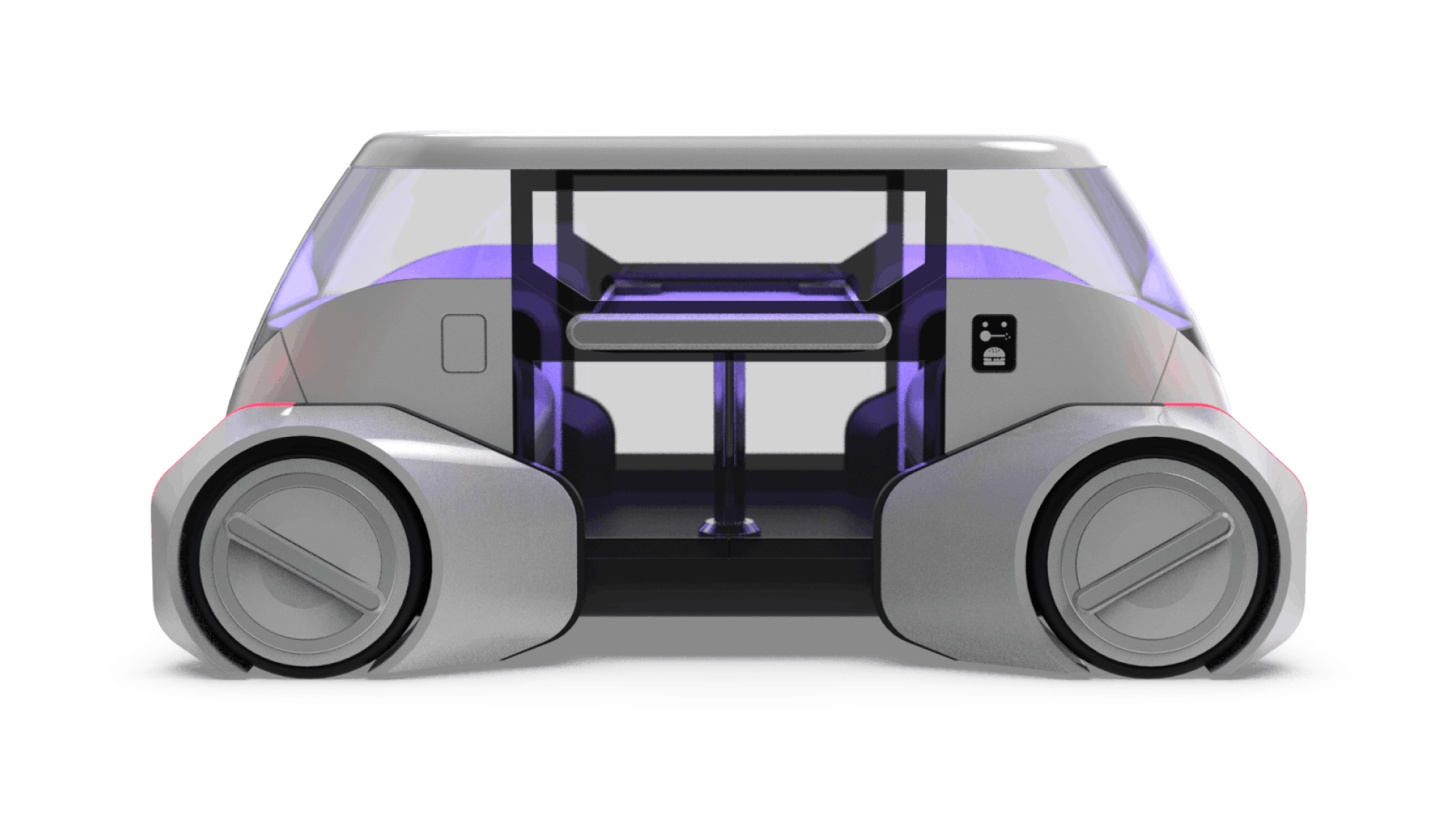
Packaging
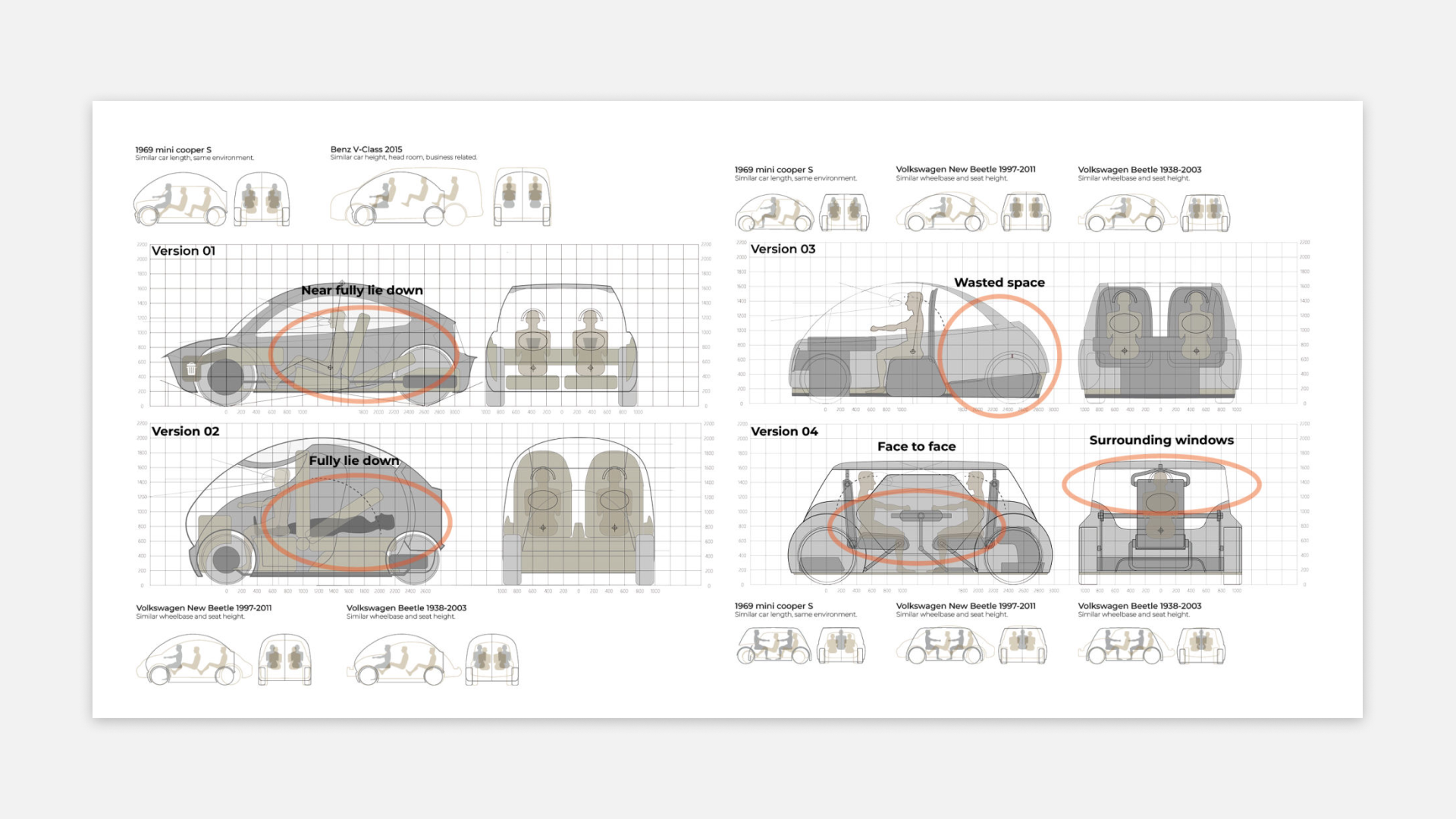
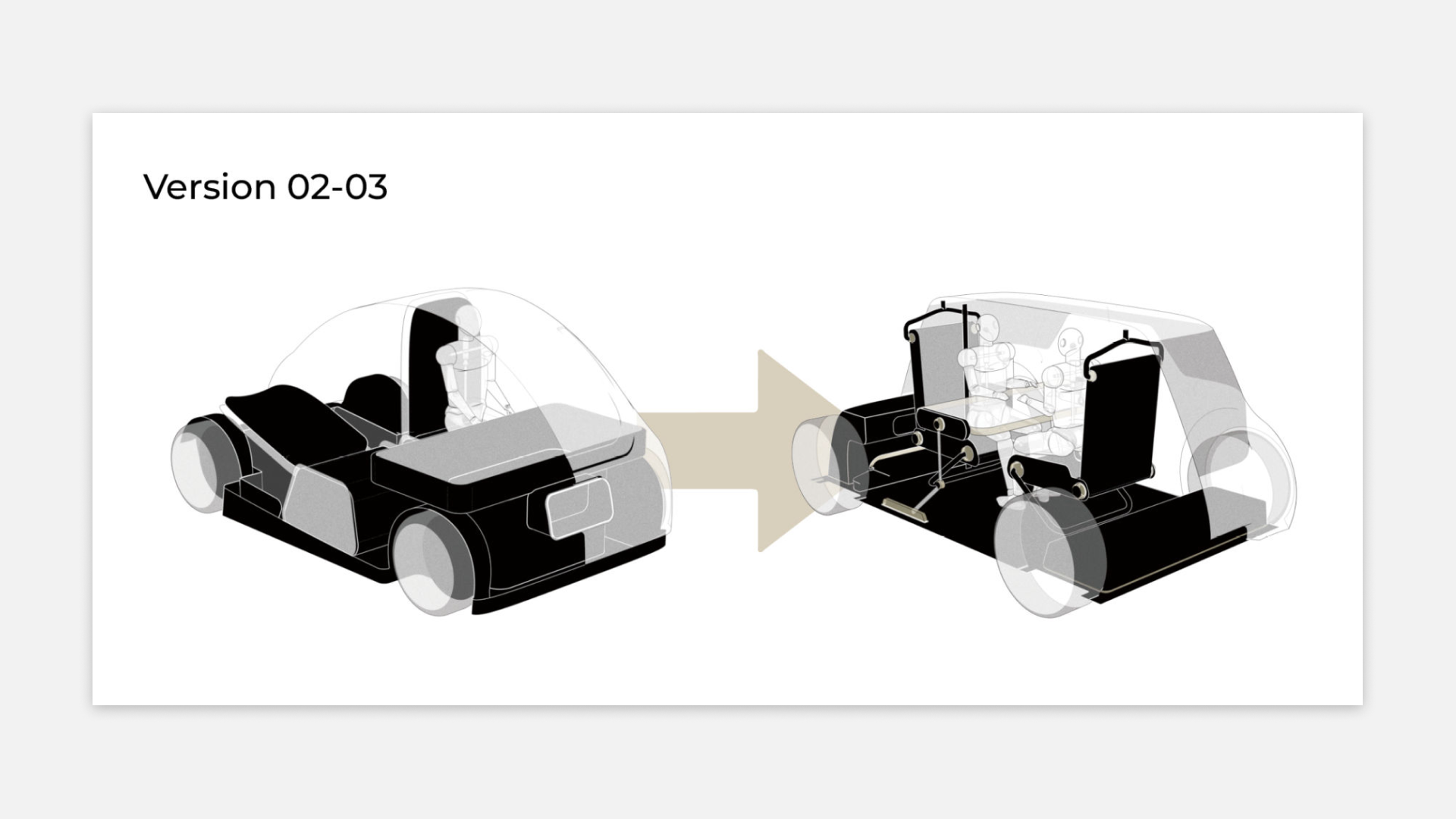
Version 01, Learning from H-point - I purchased a book on car design, published by Art Center, and used it to learn and practice car packaging in relation to my design goal. I focused on the importance of exterior and interior proportions in the process.
Version 02, Creating a cardboard prototype - For this iteration, I developed the concept of a chair that can lie completely flat. To verify the packaging dimensions, I made a cardboard prototype to examine the inside and outside of the form factor of version 02 from various angles.
Version 03, Changing the direction - Version 03 continues to center on a side-by-side arrangement for two people, which allows users to lie down almost completely. However, I discovered a significant amount of wasted space at the back of the car, and revising it could make the design more adaptable and serve more individuals. As a result, in version 04, I decided to broaden my ideas and experiment with a face-to-face interior.
Version 03/04, Surrounding windows - I designed windows around the user to allow them to have a view of the surroundings, which may enhance their emotional experience. This decision also aided in accommodating and expanding the needs of various users, such as tourists.
Exterior design process
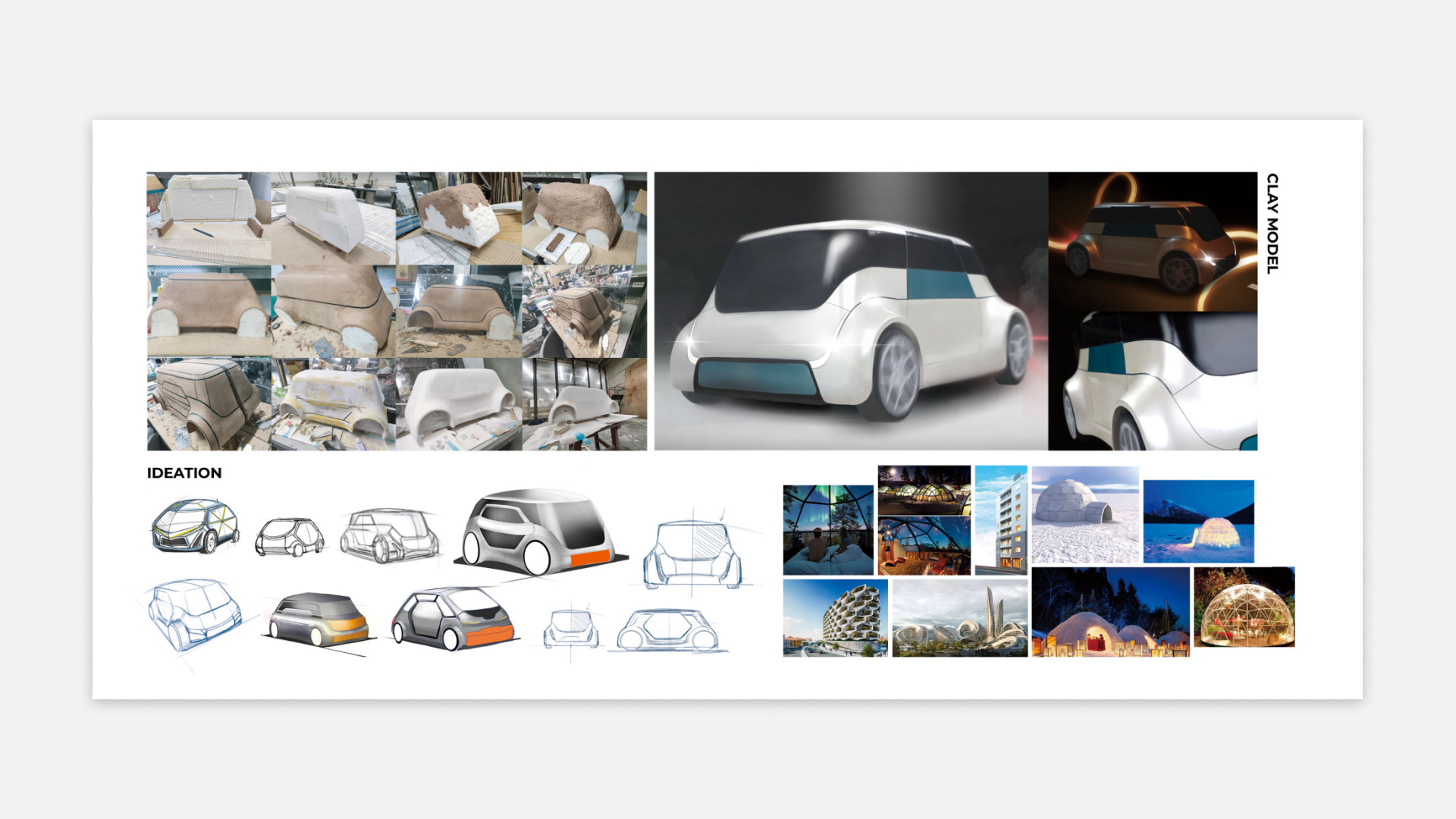
I devoted a significant amount of time to experimenting with various surfaces on the clay model. Clay allows for relatively quick surface modification. Using the previous sketches and packaging as reference, the model was created as depicted in the photos.
A radical attempt
I tried a self-operated transformation scheme
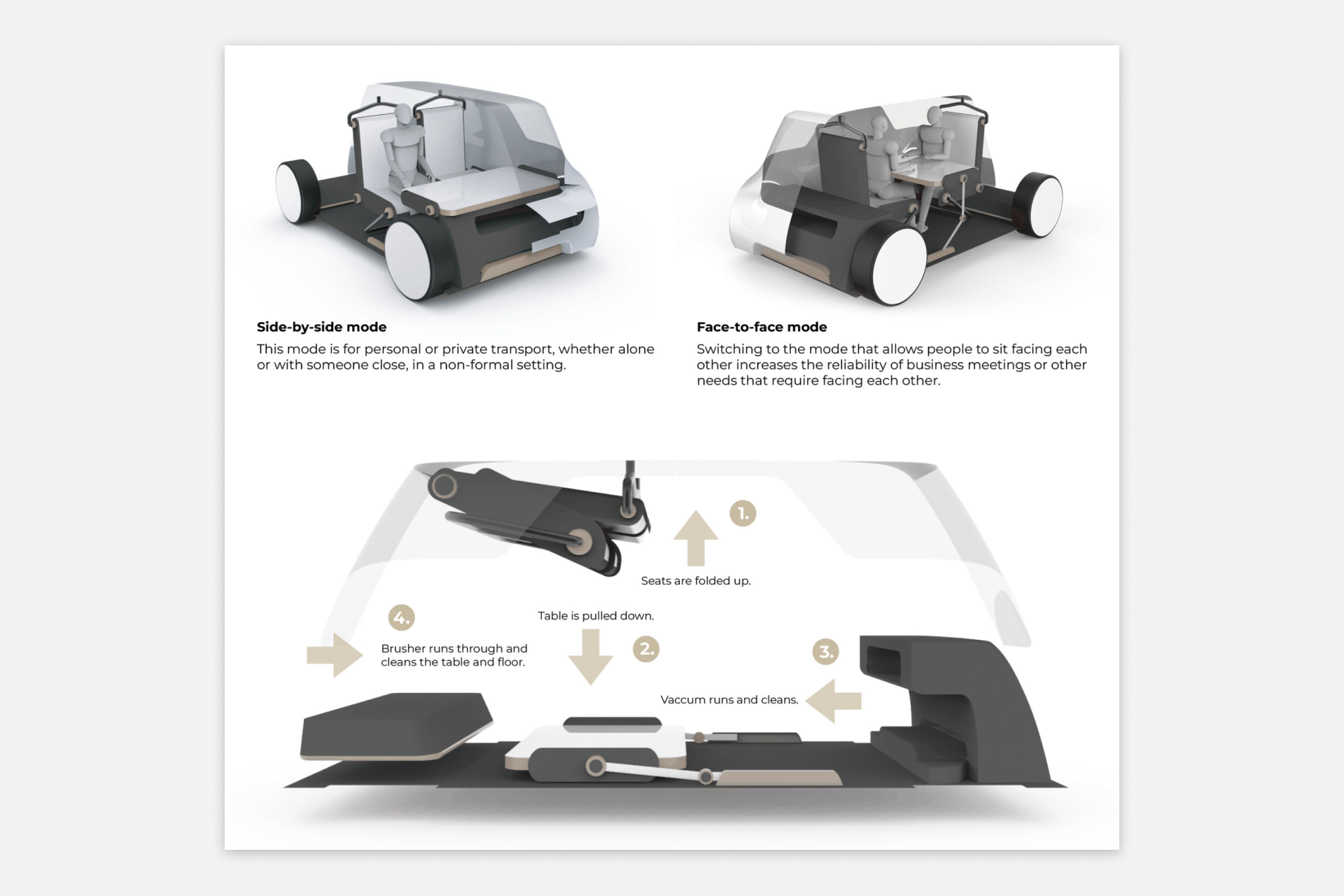
Two modes - broaden the range of users: Initially, I considered the possibility of switching between a side-by-side mode and a face-to-face mode, allowing the user to choose between the two options. While the design accommodates different situations, it can also meet the needs of other user groups.
Auto-cleaning transformation: The car is equipped with an auto cleaning system that lifts the chairs to the top and thoroughly cleans the tables and floor of the interior. This fully transformable system ensures a thorough auto-clean before the next customer arrives.
Practically refined design
Enhanced food delivery proccess
Finally, I revisited and redesigned this car as the food delivery process needed to be more efficient for the clerks. Additionally, the auto-cleaning system had flaws that made it impractical. In this version, I focused more on how food is placed in the car and removed the transformable structures that auto-clean, replacing them with a simpler air circulation system. The seats were also changed to couch-like, stable, and durable designs that are significantly easier to clean.
The EATin. side screen: The interface on the sides of the vehicle displays the current car status to those outside. It also offers a QR code for the user to scan with their phones and verify their identity to access the inside of the car.
UV light sanitizing: The ambient lighting system transforms into UV lights to sanitize the interior of the car, maintaining it clean and safe.
Out-reaching table: To enable restaurant clerks to efficiently serve food, an out-reaching table through the windows that extends out greatly simplifies delivery.
Air flow system: The powerful vacuum airflow system effectively removes small particles and food debris from the car and eliminates foul odors from the ambient.
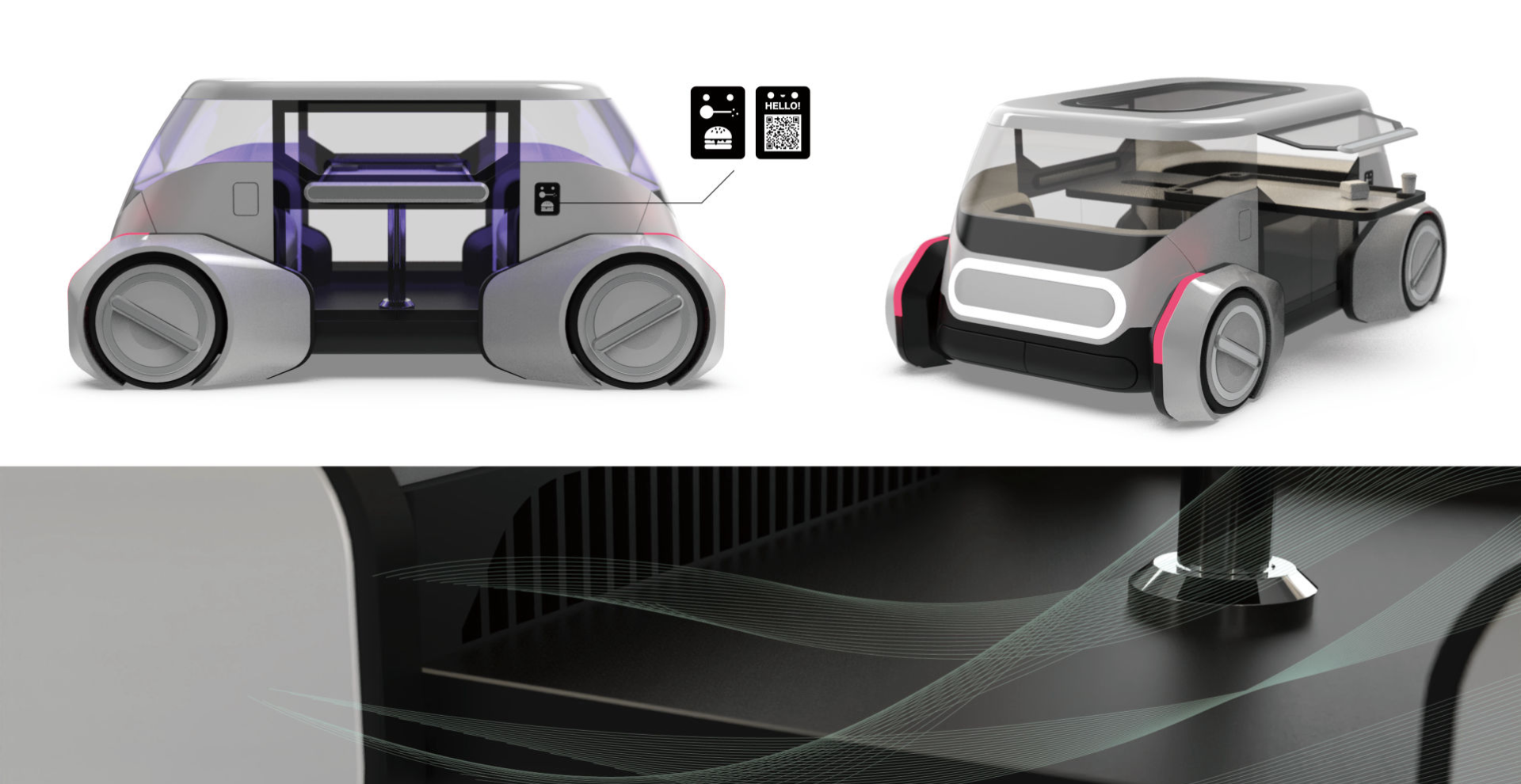
Designed and coded by Hantus Chen.